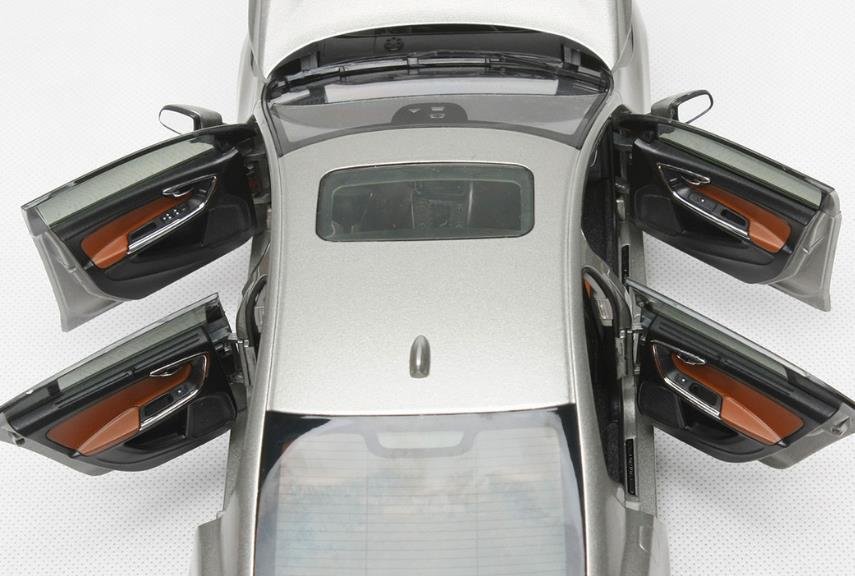China’s car market has recovered from the impact of the COVID-19 pandemic, as sales reached a new high of 30.1 million units in 2023, up 10.4 percent year-on-year, according to the China Association of Automobile Manufacturers (CAAM). The growth was driven by strong demand for premium and electric vehicles, as well as favorable policies and new model launches.
Premium vehicles, which are defined as those priced above 300,000 yuan ($46,800), accounted for 6.8 percent of the total car sales in 2023, up from 5.8 percent in 2022, the CAAM said. The sales of China-made premium vehicles from both domestic and international brands totaled 4.1 million units in 2023, up 20.3 percent year-on-year.
Electric vehicles (EVs) and plug-in hybrids (PHEVs), collectively known as new energy vehicles (NEVs), also saw a surge in popularity, as sales reached 6.7 million units in 2023, up 48.7 percent year-on-year. NEVs accounted for 22.3 percent of the total car sales in 2023, up from 16.4 percent in 2022, the CAAM said. China is the world’s largest NEV market, with more than 30 million NEVs on the road by the end of 2023.

Domestic brands gain market share and global recognition
Chinese car brands have benefited from the booming car market, as they seized a combined 54.2 percent of the market share in 2023, up from 51.9 percent in 2022, the CAAM said. They were particularly competitive in the NEV segment, as they accounted for 78.6 percent of the NEV sales in 2023, up from 74.8 percent in 2022.
Some of the leading Chinese car brands in 2023 were BYD, Geely, Great Wall, SAIC, and NIO. BYD, China’s largest NEV maker, sold 2.6 million vehicles in 2023, up 28.6 percent year-on-year, of which 1.8 million were NEVs, up 44.4 percent year-on-year. Geely, China’s largest private carmaker, sold 2.4 million vehicles in 2023, up 18.2 percent year-on-year, of which 1.2 million were NEVs, up 66.7 percent year-on-year. Great Wall, China’s largest SUV and pickup maker, sold 1.8 million vehicles in 2023, up 23.7 percent year-on-year, of which 0.8 million were NEVs, up 58.3 percent year-on-year. SAIC, China’s largest carmaker, sold 7.2 million vehicles in 2023, up 12.4 percent year-on-year, of which 1.6 million were NEVs, up 36.4 percent year-on-year. NIO, China’s leading premium NEV maker, sold 0.3 million vehicles in 2023, up 150 percent year-on-year.
Chinese car brands have also gained global recognition, as they exported 3.2 million vehicles in 2023, up 35.6 percent year-on-year, the CAAM said. The exports of NEVs increased by 86.4 percent year-on-year, reaching 1.2 million units in 2023, accounting for 37.5 percent of the total exports. Some of the major export destinations for Chinese NEVs were Europe, Southeast Asia, and Latin America.
Challenges and opportunities ahead
Despite the impressive performance of China’s car market in 2023, there are still some challenges and uncertainties ahead, such as the global chip shortage, the environmental regulations, the competition from foreign brands, and the consumer preferences.
The global chip shortage, which has affected the car industry since 2022, is expected to continue in 2024, as the demand for chips exceeds the supply, the CAAM said. The chip shortage has forced some carmakers to reduce their production or adjust their product mix, affecting their sales and profits.
The environmental regulations, which aim to reduce the carbon emissions and promote the green development of the car industry, are also becoming stricter in China and other countries, the CAAM said. The carmakers need to invest more in the research and development of NEVs, as well as the construction of charging infrastructure and battery recycling facilities, to meet the environmental standards and consumer expectations.
The competition from foreign brands, which have also increased their presence and investment in China, is another challenge for the Chinese carmakers, the CAAM said. Some of the foreign brands, such as Tesla, Volkswagen, Toyota, and Hyundai, have launched new models or expanded their production capacity in China, aiming to capture more market share and compete with the Chinese brands, especially in the NEV segment.
The consumer preferences, which are influenced by the social trends, the technological innovations, and the personal tastes, are also changing rapidly, the CAAM said. The carmakers need to understand the consumer needs and preferences, and offer more personalized and customized products and services, to attract and retain the customers.
However, there are also some opportunities and potentials for the further development of China’s car market, such as the urbanization, the digitalization, the innovation, and the globalization, the CAAM said.
The urbanization, which refers to the process of population migration from rural areas to urban areas, is expected to create more demand for cars, especially in the lower-tier cities and the rural areas, where the car ownership and penetration rates are still low, the CAAM said.
The digitalization, which refers to the application of digital technologies and data in the car industry, is expected to enhance the efficiency and quality of the car production and services, as well as create new business models and value propositions, such as the smart mobility, the connected vehicles, and the online platforms, the CAAM said.
The innovation, which refers to the development of new products, technologies, and solutions in the car industry, is expected to improve the performance and competitiveness of the carmakers, as well as meet the diverse and evolving consumer demands, such as the autonomous driving, the battery technology, and the design aesthetics, the CAAM said.
The globalization, which refers to the expansion of the car market and industry across the world, is expected to create more opportunities and challenges for the carmakers, as they need to adapt to the different market conditions and consumer preferences, as well as cooperate and compete with the local and international players, the CAAM said.
